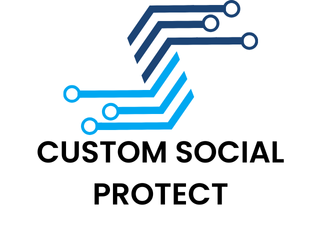Creating a secure Wi-Fi network with your TP-Link Archer C5400X isn’t just about speed; it's essential for protecting your devices and personal data in a spacious home. Learn effective strategies to enhance your network's security, reduce vulnerability, and ensure reliable connectivity throughout your living space. From optimal placement to advanced settings, this guide will empower you to take control of your Wi-Fi environment and enjoy seamless internet access without compromising safety. Protecting your digital realm starts at home—let’s dive into how you can make that happen.
Overview of Wi-Fi Security
In today's interconnected world, Wi-Fi security is paramount to ensure network safety and protect personal data from unauthorized access. A secure Wi-Fi network is the first line of defense against cyber threats that can compromise sensitive information.
Also read : Mastering IoT Security: A Comprehensive Guide to Setting Up a Safe Network with Google Nest Wifi
Importance of Wi-Fi Security
Securing your Wi-Fi network prevents unauthorized users from accessing your internet connection and potentially intercepting your data. This can include personal information, financial details, and sensitive communications. Implementing robust encryption methods like WPA3 ensures that data transmitted over your network is encrypted, making it difficult for intruders to decipher.
Common Security Threats
Home networks are vulnerable to several security threats, including unauthorized access, data interception, and malware attacks. Hackers often exploit weak passwords and outdated encryption protocols to gain access. Once inside, they can monitor internet activity, steal personal information, or even launch attacks on other devices connected to the network.
Also to see : How can you optimize a Dell Precision 5750 for 3D rendering and CAD applications?
Benefits of Advanced Protocols
Utilizing advanced encryption protocols such as WPA3 significantly enhances your network safety. These protocols provide stronger encryption and improved authentication processes, making it more challenging for unauthorized users to penetrate your network. By upgrading to the latest security standards, you not only safeguard your data but also ensure a seamless and secure internet experience for all users in your household.
Introduction to the TP-Link Archer C5400X
The TP-Link Archer C5400X is a high-performance router designed to meet the demanding needs of modern households. With its router features, this device stands out as an ideal choice for those seeking robust connectivity solutions.
Key Features of the TP-Link Archer C5400X
This router boasts a tri-band system, delivering combined speeds of up to 5400 Mbps. It is equipped with a 1.8 GHz 64-bit quad-core CPU and three co-processors, ensuring smooth and efficient data handling. The router also includes eight external antennas for enhanced coverage, making it suitable for large or multi-story homes.
Advantages for Spacious Homes
For homeowners with expansive living spaces, the TP-Link Archer C5400X provides reliable and consistent Wi-Fi coverage. Its advanced beamforming technology focuses the wireless signal towards connected devices, optimizing performance and reducing dead zones. This ensures that every corner of your home receives a strong and stable connection, perfect for streaming, gaming, and smart home devices.
Overview of Security Capabilities
Security is a top priority with the TP-Link Archer C5400X. It features built-in antivirus and malware protection, safeguarding your network from potential threats. The router also supports WPA3 encryption, offering enhanced protection for your personal data. With these security measures, users can confidently browse and communicate online without compromising their privacy.
Initial Setup of the TP-Link Archer C5400X
Setting up the TP-Link Archer C5400X is a straightforward process that ensures your home network is up and running efficiently. Follow this installation guide to connect your router and access its configuration settings.
Step-by-Step Guide to Installing the TP-Link Archer C5400X
Begin by placing the router in a central location to maximize coverage. Connect the router to your modem using an Ethernet cable, ensuring a stable internet connection. Plug the router into a power source and switch it on. Wait for the LED indicators to stabilize, signalling that the router is ready for configuration.
Accessing the Router's Web Interface
To access the router setup, open a web browser on a connected device and enter the default IP address, usually 192.168.0.1 or 192.168.1.1. This will take you to the TP-Link setup interface. Log in using the default credentials provided in the router's manual.
Once logged in, you can configure network settings, set up a secure password, and customize other features to suit your needs. This web interface is user-friendly, allowing even those with limited technical knowledge to navigate it with ease.
Configuring Security Settings
To maximize the protection of your TP-Link Archer C5400X, configuring the router security settings is essential. Begin by enabling WPA3, the latest encryption standard, which offers superior protection for your network. This ensures that any data transmitted over your Wi-Fi is encrypted, making it difficult for unauthorized users to access sensitive information.
Another crucial step is setting up a guest network. This feature allows visitors to connect to the internet without accessing your primary network, keeping your main network secure. It provides a separate access point, which can be easily managed and monitored through the router's web interface. By isolating guest users, you reduce the risk of potential security breaches.
Additionally, it is advisable to disable WPS (Wi-Fi Protected Setup). While WPS was designed for easy connectivity, it has vulnerabilities that can be exploited by hackers to gain unauthorized access. Disabling WPS enhances your network's security by removing this potential entry point.
By carefully configuring these security settings, you ensure a safer internet environment for all users in your household. Implementing these measures not only protects your data but also offers peace of mind knowing your network is well-guarded against threats.
Optimizing Wi-Fi Coverage in Large Homes
Achieving optimal Wi-Fi coverage in expansive homes can be challenging, but with the right strategies and tools, you can ensure a reliable connection throughout your space.
Tips for Positioning the Router
Start by placing your router in a central location, away from walls and obstructions. This helps distribute the signal evenly across your home. Elevating the router, such as placing it on a shelf, can also enhance coverage by reducing interference from furniture and other objects.
Utilizing TP-Link Features for Extended Range
The TP-Link Archer C5400X offers features that aid in range optimization. Its advanced beamforming technology focuses the Wi-Fi signal towards connected devices, enhancing performance and reducing dead zones. Additionally, adjusting the router's antenna orientation can further improve signal reach and strength.
Considering Additional Hardware
For homes with unique layouts or multiple floors, additional hardware may be necessary. Consider investing in Wi-Fi extenders or a mesh network system. Mesh networks, in particular, provide seamless coverage by using multiple nodes to blanket the entire home with a strong Wi-Fi signal. This setup ensures consistent connectivity, even in hard-to-reach areas, making it ideal for large households with numerous devices.
Monitoring and Managing Network Access
Effectively managing your network is essential to ensure a secure and efficient internet experience. Network management begins with monitoring the devices connected to your Wi-Fi. Access the router's web interface to view a list of all connected devices. This allows you to identify unauthorized access and ensure only trusted devices are linked to your network.
Setting Up Parental Controls
Parental controls are a valuable feature for families, allowing you to create a safe online environment for children. Through the router's settings, you can restrict access to inappropriate websites, set time limits on internet usage, and schedule specific hours for online activity. This ensures that children can browse safely and responsibly, while parents maintain control over the content accessed.
Managing Bandwidth Allocation
Efficient device access involves managing bandwidth allocation to prevent any single device from monopolizing the network. Use the Quality of Service (QoS) feature to prioritize bandwidth for essential devices or applications, such as video conferencing or online gaming. By allocating bandwidth effectively, you ensure a balanced and smooth internet experience for all users in your household.
Troubleshooting Common Security Issues
Maintaining robust network security involves being proactive in identifying and resolving potential issues. Here are some strategies to troubleshoot common security problems effectively.
Identifying and Resolving Common Security Breaches
Security breaches can manifest in various ways, such as unauthorized devices on your network or unusual data usage patterns. Regularly monitor your network for unfamiliar devices and immediately disconnect any suspicious ones. Ensure your router's firmware is up-to-date, as manufacturers frequently release updates to address vulnerabilities.
Steps to Take if Your Network is Compromised
If you suspect your network has been compromised, act swiftly. Change your Wi-Fi password to a strong, unique combination and update the credentials for all connected devices. Enable WPA3 encryption if it's not already active. Consider resetting your router to factory settings and reconfiguring it to eliminate any unauthorized changes made by intruders.
Regular Maintenance Tips for Ongoing Security
Routine maintenance is crucial for sustained network security. Regularly update your router's firmware and review security settings to ensure they align with the latest standards. Periodically change passwords and encourage household members to use strong, varied passwords for their devices. Implementing these practices will help maintain a secure and resilient network environment.
Advanced Security Features of the TP-Link Archer C5400X
The TP-Link Archer C5400X is equipped with advanced features that bolster your network's security, ensuring robust protection against cyber threats.
Utilizing Advanced Security Features
One of the standout security protocols is the built-in intrusion detection system. This feature continuously monitors your network for suspicious activities, alerting you to potential breaches. By identifying and blocking unauthorized access attempts, it acts as a vigilant gatekeeper for your home network.
Importance of Keeping Firmware Updated
Regular firmware updates are crucial for maintaining your router's security. TP-Link frequently releases updates that include security patches to address vulnerabilities. By keeping your firmware up-to-date, you ensure that your router is protected against the latest threats, providing peace of mind for all users.
Exploring Additional Security Tools Offered by TP-Link
TP-Link offers additional security tools, such as parental controls and device management features, which allow you to tailor the security settings to your needs. These tools provide an extra layer of protection, enabling you to manage access and monitor usage effectively. By leveraging these advanced features, you can create a secure and controlled network environment.
Visual Aids and Resources
Incorporating visual aids like diagrams can significantly enhance your understanding of optimal router placement and settings. These visual tools offer a clear representation of how to position the TP-Link Archer C5400X to maximize coverage and security. For instance, diagrams illustrating the ideal router location in relation to walls and furniture can help in reducing interference and dead zones.
Recommended Online Resources
For those keen on delving deeper into networking, several online resources provide valuable insights. Websites offering step-by-step guides and video tutorials can be particularly helpful. These resources cover topics ranging from basic setup to advanced configuration, enabling users to fully leverage their router's capabilities.
Utilizing TP-Link Support
TP-Link's support services are an invaluable resource for troubleshooting and guidance. Their website features a comprehensive FAQ section, user manuals, and firmware updates, ensuring your router operates at peak performance. Additionally, TP-Link's customer support team is available to assist with more complex issues, providing expert advice tailored to your specific needs. By utilizing these resources, you can confidently manage and optimize your home network.











